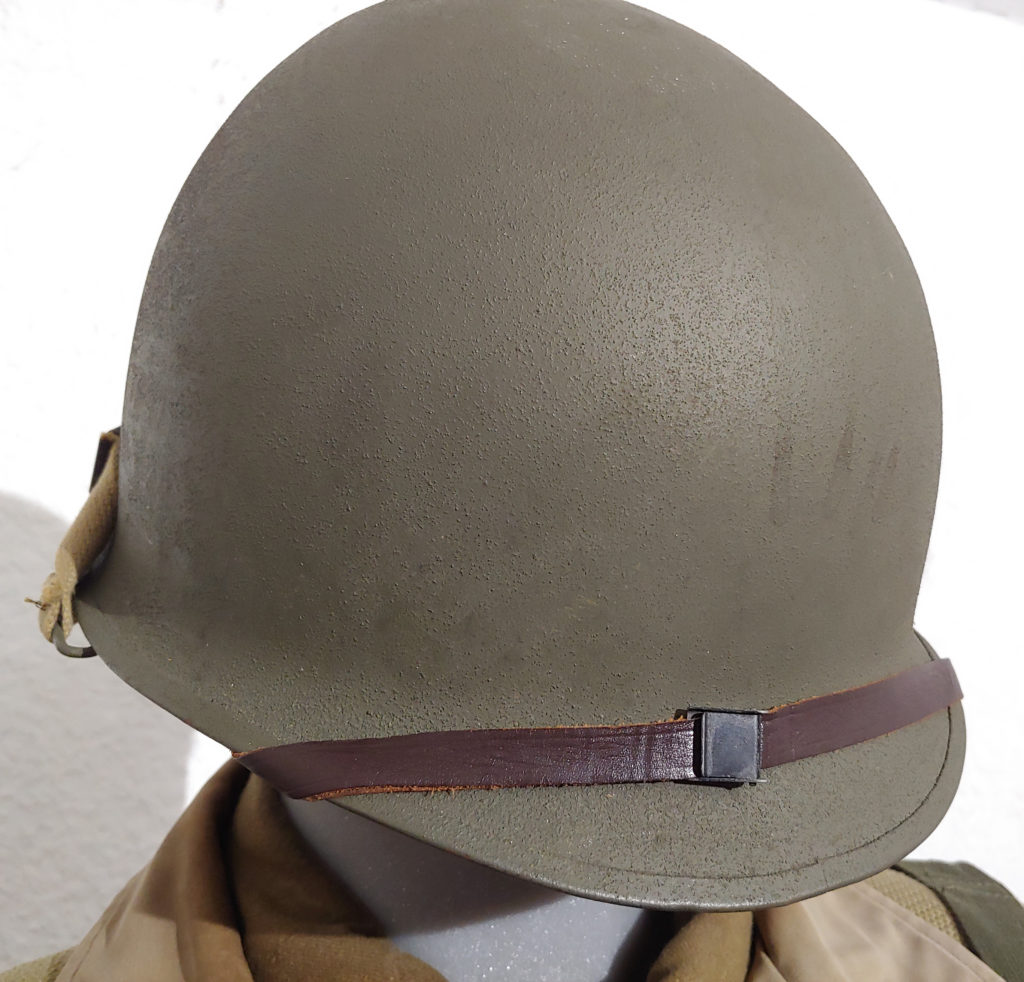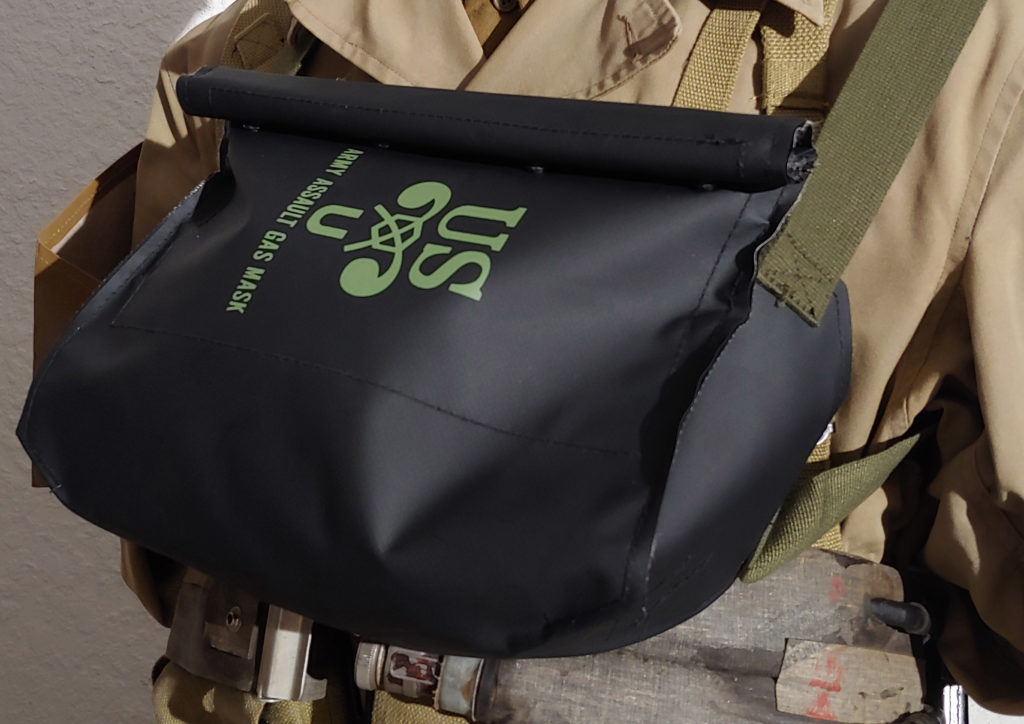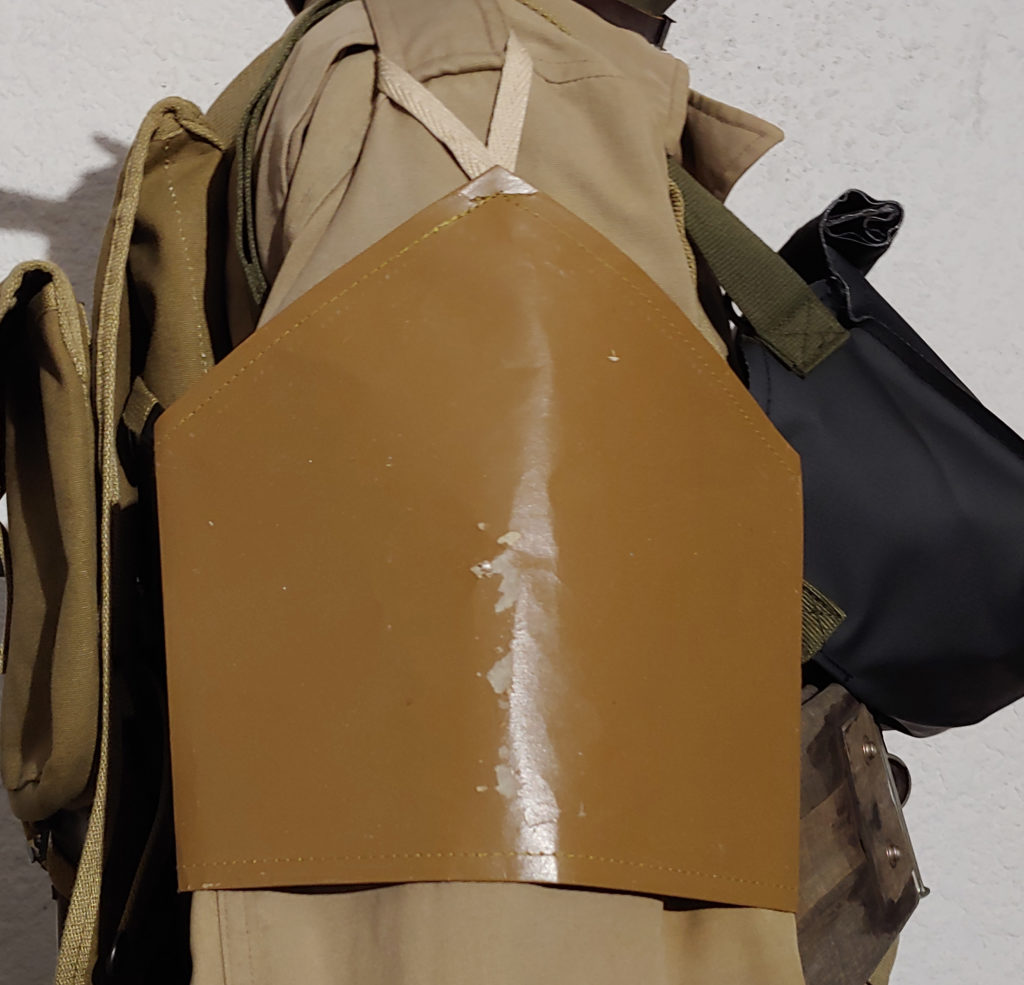D-Day P2
Front Seam Swivel Bail Helmet

The M1 helmet was adopted in 1941 to replace the outdated World War I-era designed M1917A1 “Kelly” helmet after research was done by Major Harold G. Sydenham. Over 22 million U.S. M1 steel helmets were manufactured through September 1945. Production was done by McCord Radiator and Manufacturing Company and Schlueter Manufacturing Company.
We go deep on the M1 Helmet on episode 12.
M7 ASSAULT GAS MASK BAG

The M7 gas mask bag was a rubberized waterproof canvas bag that contained two items designed to help soldiers deal with the potential of German gas attacks both during and after the Operation Overlord assault on June 6, 1944. The first item was an M5-11-7 assault gas mask. The second was an extra gas detection brassard which could be used to replace the brassard that was worn into combat during the initial beach landings.
Infantry soldiers generally wore the M7 bag strapped to their chests for easy access to their gas masks, while paratroopers wore theirs attached to their upper thighs (their parachute prevented them from wearing them on their chests).
Not all troops who landed on Normandy on June 6th were outfitted with the M7 bag and M5 gas mask. The initial assault troops, those who had the highest degree of probability of getting wet, were the ones issued with the M7/M5 combination. Soldiers landing in later waves were often issued the M3-10-6 gas mask, which was not designed to be waterproof.
The symbol beneath the letters “US” is the branch insignia of the U.S. Army Chemical Corps.
Gas Detection Brassard

For the Normandy invasion, American troops were provided with a variety of chemical warfare equipment, as it was still unknown whether Hitler would employ poison gas on the battlefield in an effort to prevent the breaching of the Atlantic Wall. One measure taken was that all Allied invasion clothing was saturated with CC-2, an oily, smelly gas repellent that made GI uniforms stiff and uncomfortable (scenes of GIs boiling their uniforms in iron pots to soften them and get rid of the smell were captured on film taken after D-Day). Another was the issue of special assault gas masks in water-resistant black rubberized bags to be used by the troops that were part of the initial landings. Yet another was the gas-detection brassard, which was an armband much like a military policeman’s armband that was made of chemically impregnated light brown paper (resembling waxed paper) designed to be worn on the shoulder. After sliding the armband up the sleeve, a small loop was threaded through the epaulette on the wearer’s jacket to secure it in place. These brassards would turn red from a chemical reaction if they were exposed to mustard gas, thus warning the soldier of its presence (though rather late to do much about it!). The brassard was fragile and easily torn in combat. It was intended to be worn on the left shoulder so as not to be shredded during the firing of a weapon (most soldiers were right-handed). Soldiers were issued two brassards: one to be worn into combat, and a spare that was stored along with the soldier’s gas mask in a gas mask bag, which was almost universally discarded as soon as possible. Both the brassards and gas masks would prove unnecessary, since the Germans, themselves afraid of retaliatory gas attacks on their own troops and people, did not deploy such weapons during the invasion or afterward.